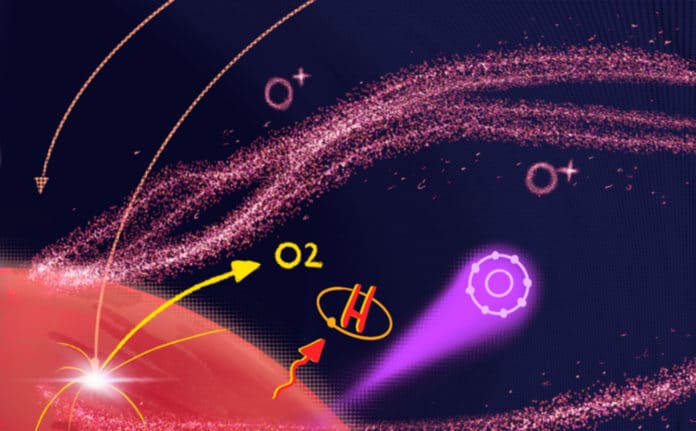Scientists are working on generalizing their current understanding of Mars. They aim to determine which planets beyond Earth’s solar system are most likely to host life.
The appropriate response relies on the atmospheres—and what it takes to retain those atmospheres, including Mars, if it were circumnavigating an alternate star.
That’s why scientists have been using Mars to characterize and identify habitable, Earth-like planets in other solar systems. The research team includes scientists from the Laboratory for Atmospheric and Space Physics (LASP) at the University of Colorado Boulder.
The team is studying the case of ‘Exoplanet Mars,’ orbiting a dim, class-M star. The star is only about 4% as bright as our sun and nearly 3,000 degrees Celsius cooler. This study would give a superior comprehension of how long a planet like Mars could hold an atmosphere if it orbited this smaller, cooler, yet a more dynamic star.
The primary outcomes show that the rate at which Exoplanet Mars would lose its atmosphere would be larger than what the real world planet has experienced.
David Brain, a planetary researcher at LASP and the team’s leader, said, “Mars is a remarkable natural experiment that demonstrates how its atmosphere and, therefore, its habitability can be affected by the properties of both the planet and the star it orbits.”
“The challenge is assembling the expertise, the observations, and the model results to understand the relative importance of each property, to make predictions about the habitability of individual planets orbiting other stars.”
“Our center has brought together experts from many scientific disciplines to address big-picture questions like the habitability of alien planets collaboratively.”
“Organizing scientists from many different disciplines is not always easy. The team members have had to learn how to communicate more effectively and figure out how to meld models developed by scientists in disciplines that had diverged from each other in recent decades.”
“Together, we are figuring out which physics is important to include and how to link models together while making sure team members feel heard and are inclusive in the process.”
This multi-disciplinary, cutting-edge approach is made possible by the new Magnetic fields, Atmosphere, and the Connection to Habitability (MACH) NASA DRIVE Science Center, which Brain leads. DRIVE Science Centers (DSC) are part of NASA’s integrated multi-agency initiative to address grand challenge goals.
The importance of this work was highlighted just a few weeks ago, when the National Academies of Sciences, Engineering, and Medicine named “Pathways to Habitable Worlds” as one of the three key focus areas for future research in its “Pathways to Discovery in Astronomy and Astrophysics for the 2020s” (Astro2020) report.
David Brain will be presenting some of the MACH team’s preliminary results this week during the AGU Fall Meeting 2021 in New Orleans.
